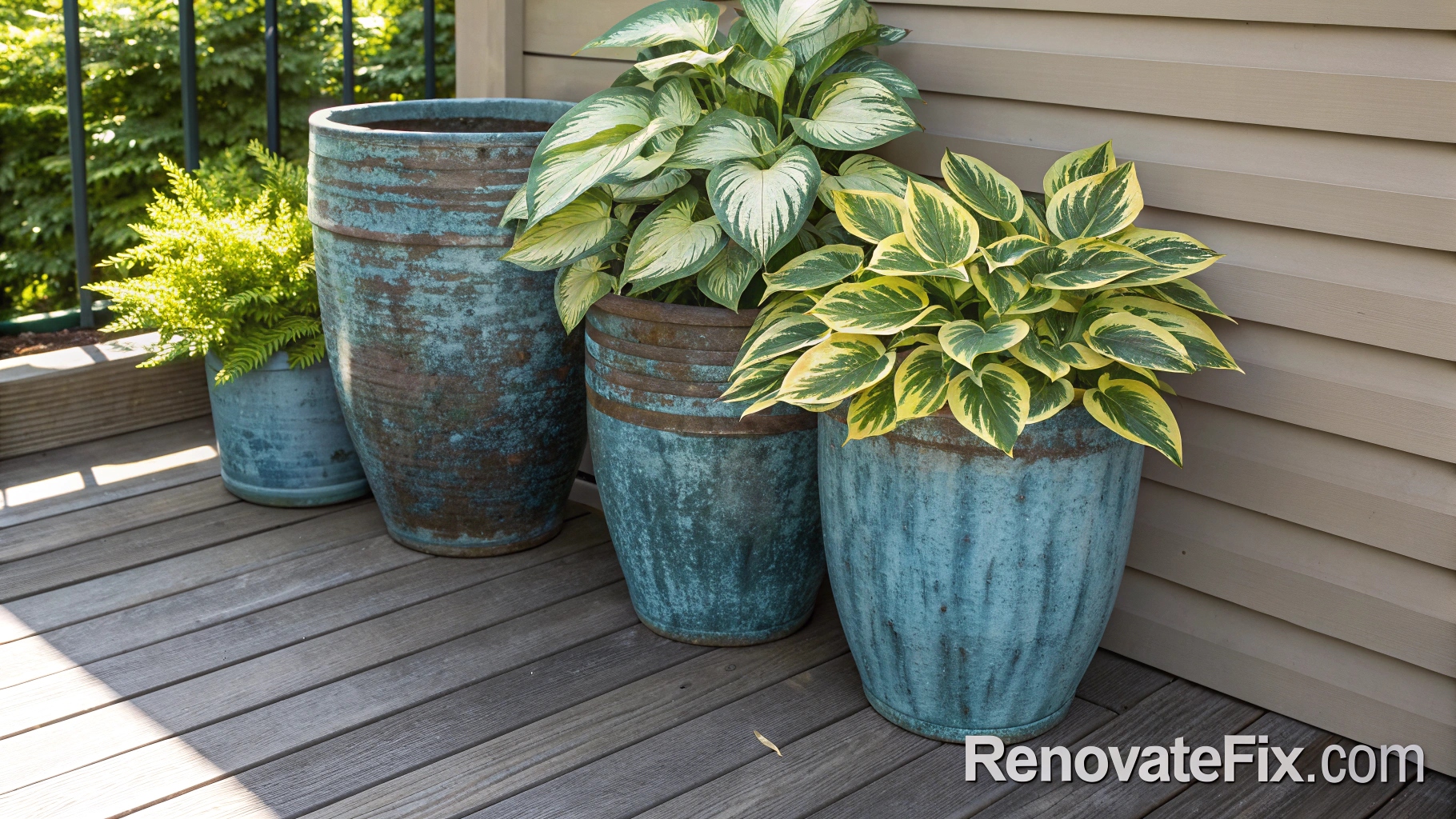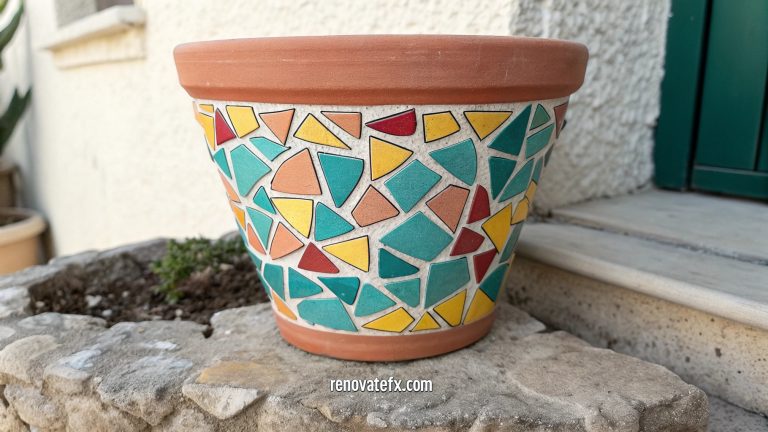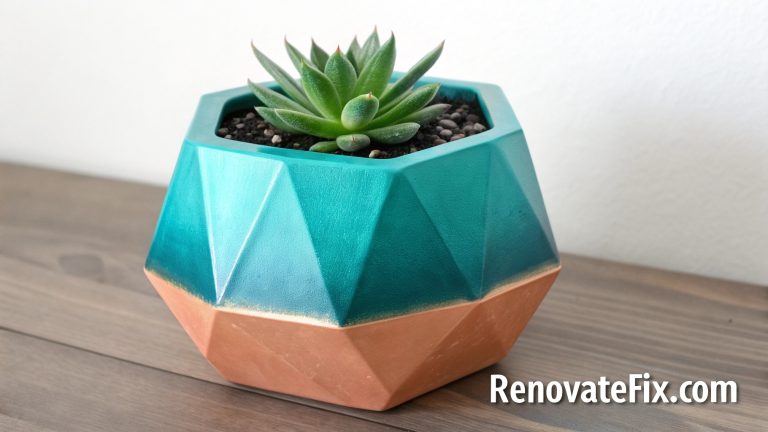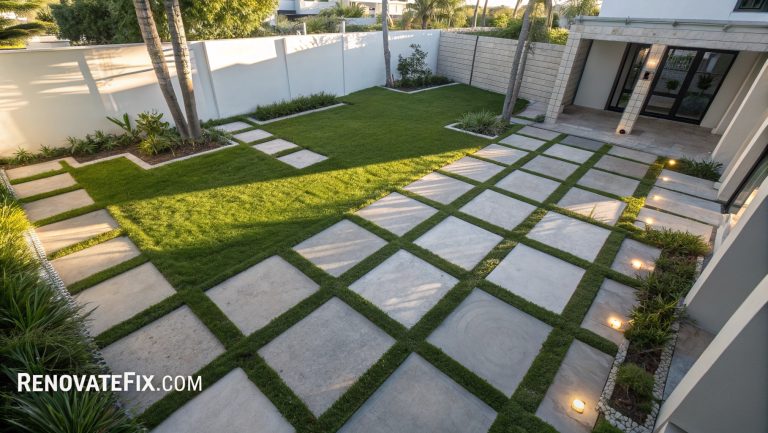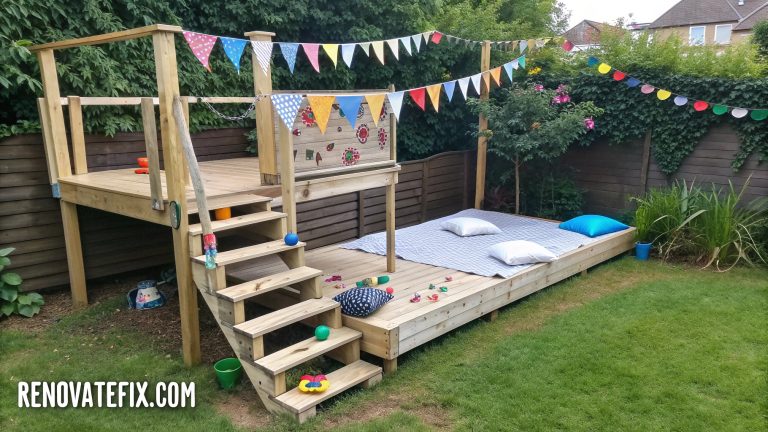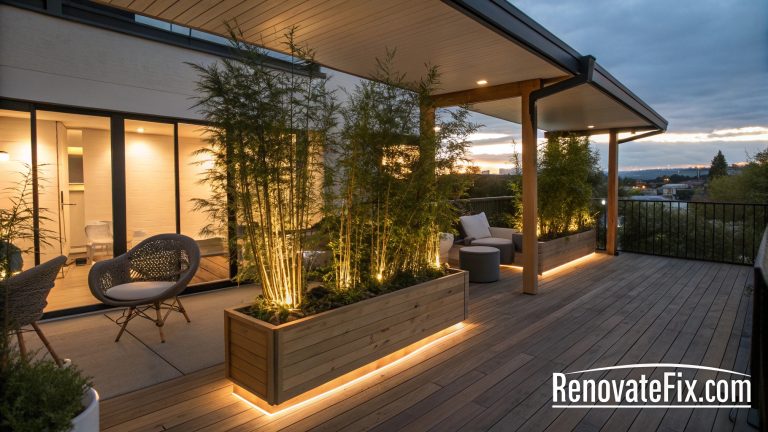20 Beautiful Hostas Garden Design Ideas for Your Landscape
Hostas remain among the most versatile and beloved foliage plants for creating stunning garden landscapes.
With their varied sizes, textures, colors, and shapes, these shade-loving perennials offer endless possibilities for garden design.
From intimate woodland settings to grand border displays, hostas can transform any garden space into a lush, textured paradise.
This comprehensive guide explores twenty innovative ways to utilize hostas in your landscape, providing inspiration whether you’re working with a small shaded corner or redesigning an entire yard.
Each approach highlights the remarkable versatility of these hardy plants while offering practical tips for creating eye-catching garden arrangements that will flourish season after season.
1. Woodland Path Borders
Lining naturalistic pathways with varied hosta cultivars creates a soft, welcoming edge that guides visitors through shaded garden areas.
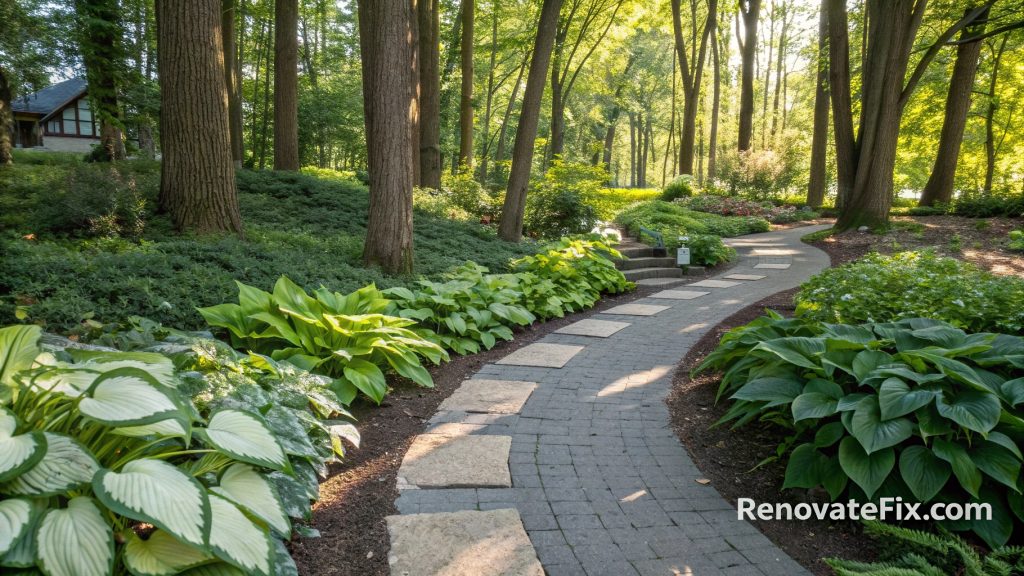
Select contrasting varieties ranging from miniature to giant specimens, alternating between blue, green, and variegated types for visual rhythm.
Position smaller varieties at the front edges while allowing larger specimens to create dramatic backdrop effects, ensuring the path feels embraced by lush foliage throughout the growing season.
This arrangement mimics natural woodland settings where hostas would naturally thrive, offering a harmonious transition between formal garden areas and wilder spaces.
2. Container Garden Groupings
Arrange hostas in distinctive containers to create movable garden features perfect for patios, entryways, or problem areas.
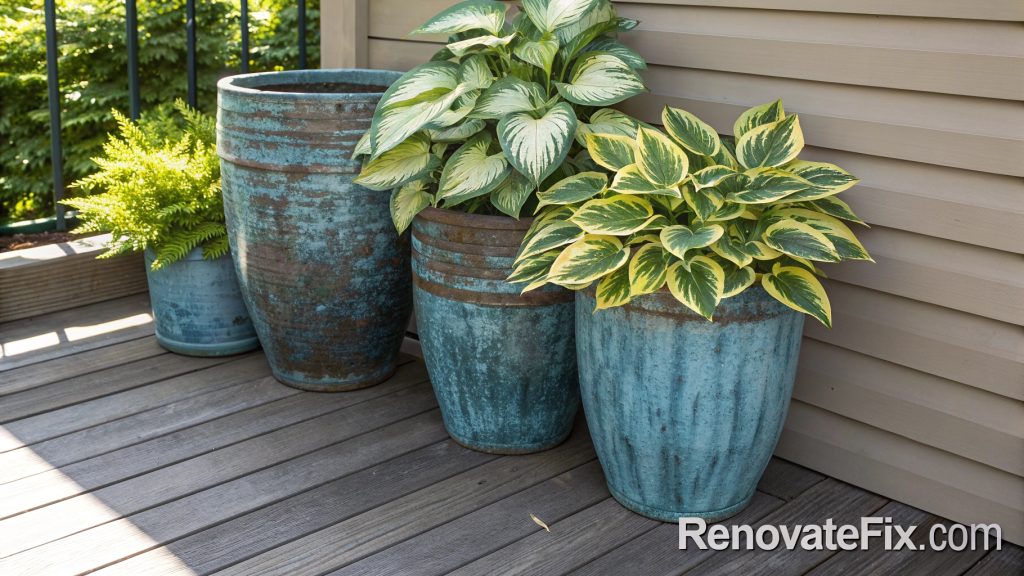
Choose pots with complementary colors but varying heights, shapes, and textures to enhance the visual impact of the foliage collection.
Mix miniature varieties with medium-sized specimens, positioning them at different elevations using plant stands or decorative blocks to create an engaging multi-level display.
Container groupings allow for seasonal rearrangement and provide perfect solutions for challenging garden spaces where soil conditions might otherwise prevent successful hosta cultivation.
3. Rock Garden Integration
Nestling smaller hosta varieties among rocks creates stunning textural contrasts while providing perfect growing conditions for these moisture-loving plants.
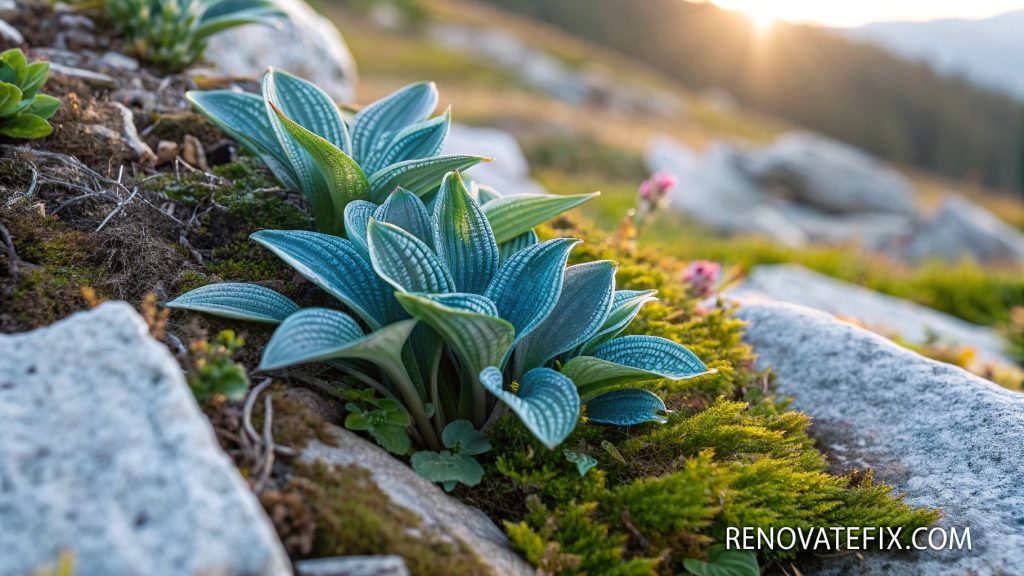
Select compact, slow-growing cultivars with distinctive leaf patterns that won’t overwhelm surrounding rock formations but will instead complement their natural beauty.
Position plants where morning sun and afternoon shade create ideal growing conditions, allowing natural rainfall to channel between rocks providing consistent moisture levels throughout growing seasons.
This approach works particularly well on sloped terrain where rocks help prevent erosion while creating numerous microclimates suitable for different hosta varieties.
4. Water Feature Companions
Situating hostas alongside ponds, streams, or fountains capitalizes on their natural affinity for moisture while creating striking reflections of their distinctive foliage.
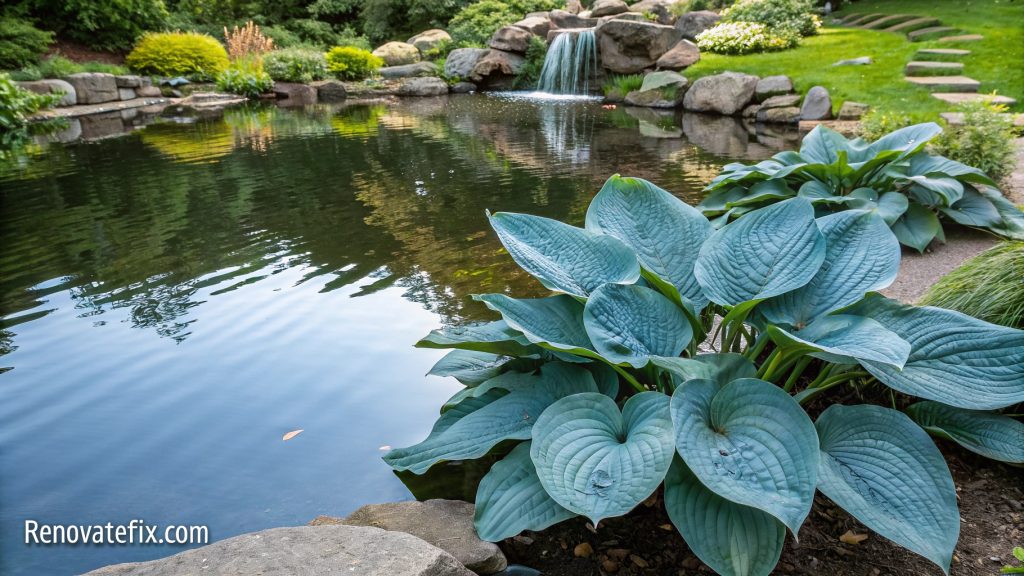
Choose varieties with prominent leaf textures and bold colors that will mirror dramatically on water surfaces, positioning larger specimens where their reflection will double their visual impact throughout daylight hours.
Allow some plants to gracefully overhang water edges, creating natural transitions between aquatic and terrestrial environments that attract beneficial wildlife while softening constructed water features with living elements.
5. Gradient Color Displays
Arranging hostas in graduated color sequences creates visual flow that draws the eye through garden spaces.
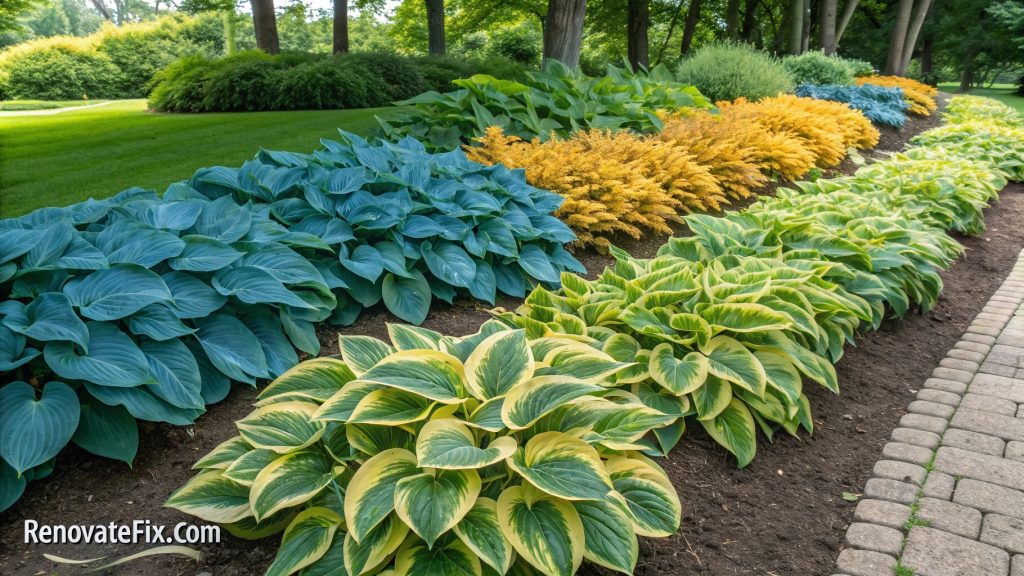
Begin with deep blue varieties, transitioning through blue-green, pure green, chartreuse, and finally to gold specimens in a deliberate progression that creates natural movement.
Plant in sweeping groups rather than rigid rows, allowing each color section to gently blend into the next for a naturalistic effect that changes subtly as sunlight shifts throughout day.
This approach works beautifully in larger beds where the full color spectrum can develop and be appreciated from multiple viewing angles.
6. Formal Symmetrical Arrangements
Creating mirror-image hosta plantings on either side of garden features establishes formal structure and balance in shaded landscapes.
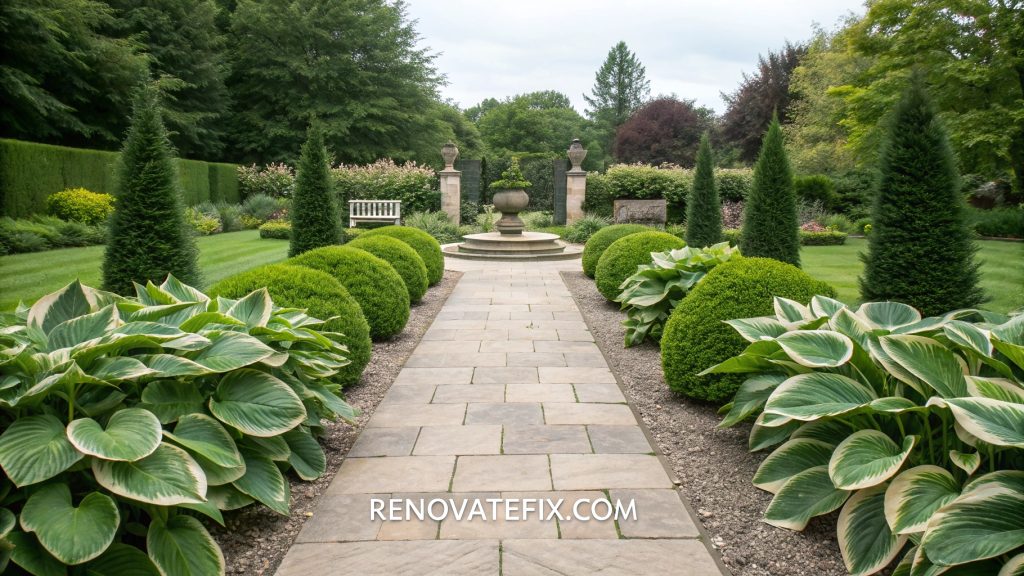
Select identical specimens of architectural varieties with upright growth habits and distinctive leaf shapes, placing them in perfectly matched positions to frame walkways, entrances, or focal points.
Maintain crisp edges between planted areas and adjacent hardscaping elements to emphasize the intentional design aspect, allowing the natural symmetry of individual hosta plants to reinforce the overall formal garden aesthetic.
7. Miniature Hosta Collections
Dedicating specific garden areas to collections of miniature hostas creates intricate displays that invite close observation and appreciation of subtle details.
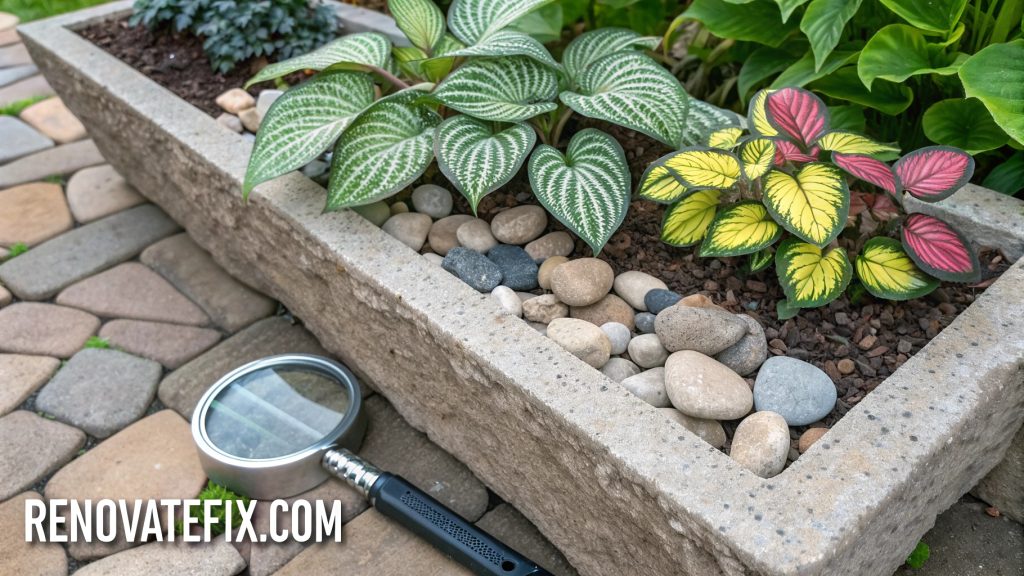
Group tiny varieties in raised beds or troughs where their diminutive size and delicate features can be easily viewed without stooping, creating arrangements based on leaf shape, color variations, or growth habit.
Mulch with small pebbles or crushed gravel that won’t overwhelm the plants visually but will help retain moisture and suppress weeds around these precious specimens.
8. Hosta Color Echoes
Pairing hostas with companion plants that echo their distinctive coloration creates sophisticated planting combinations with visual cohesion.

Match the gold margins of variegated hostas with nearby golden ferns, or complement blue hostas with blue-flowering perennials that bloom above the foliage canopy.
Position plants so that color relationships remain visible from primary viewing angles, creating intentional color harmony that feels both purposeful and naturally occurring.
This technique works across seasons as different companion plants come into their prime alongside the consistent foliage display.
9. Raised Bed Showcases
Elevating hostas in purpose-built raised beds creates focal points while improving drainage and soil conditions for optimal growth.
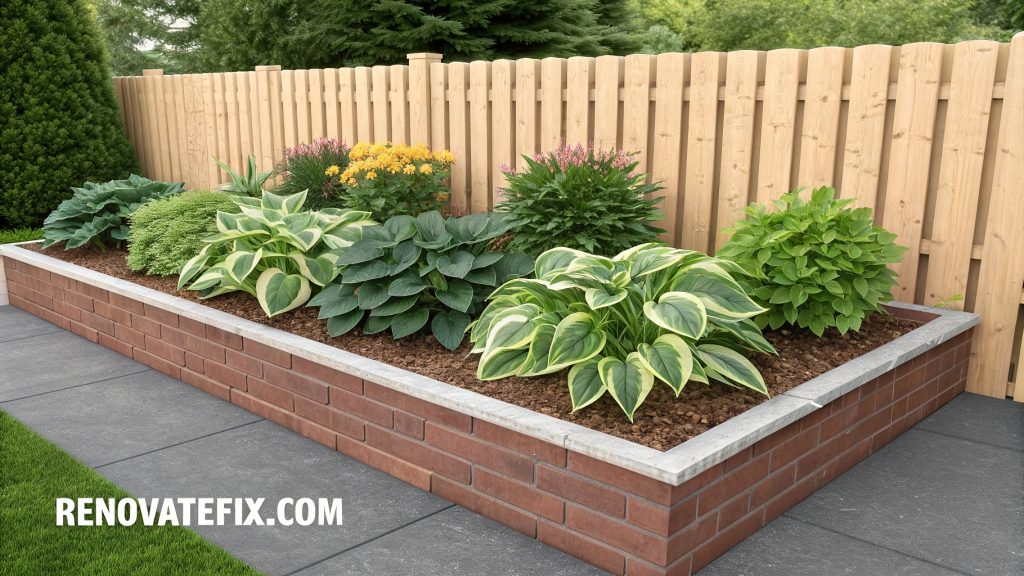
Construct beds using materials that complement surrounding architecture, filling with rich, moisture-retentive soil mixes specifically formulated for woodland perennials.
Position beds where they can be viewed from multiple angles, showcasing the distinctive characteristics of premium hosta specimens against the vertical elements of the raised structure.
This approach works particularly well for displaying collector varieties or specimen plants deserving special attention.
10. Seasonal Bulb Partnerships
Interplanting hostas with spring-flowering bulbs maximizes garden space while creating two distinct seasonal displays in the same location.
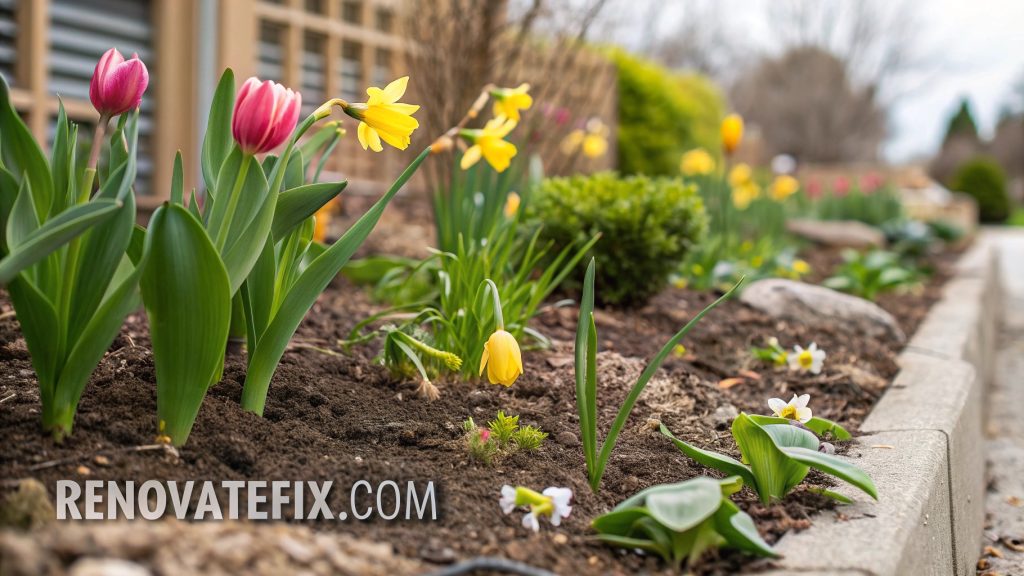
Select early bulbs that complete their bloom cycle just as hostas emerge, allowing their fading foliage to be hidden beneath expanding hosta leaves throughout summer months.
Position bulbs between hosta crowns rather than directly above them to prevent damage during seasonal maintenance, creating naturalistic drifts that complement the organized structure of hosta plantings.
11. Monochromatic Hosta Gardens
Creating garden spaces devoted entirely to single-color hosta varieties produces dramatic impact through subtle variations in shape, size, and texture.
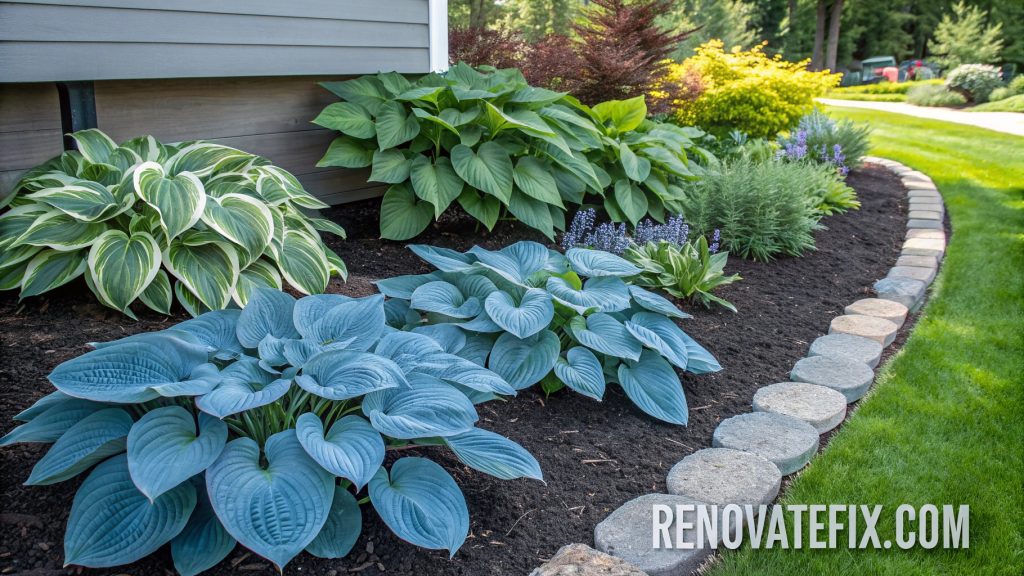
Select exclusively blue, green, or gold cultivars, arranging them to showcase the remarkable diversity within a limited color palette.
Position plants so that sunlight interacts differently with various leaf surfaces, highlighting differences in glossiness, veination patterns, and leaf substance among seemingly similar specimens.
This sophisticated approach appeals particularly to collectors and connoisseurs who appreciate nuanced distinctions between related cultivars.
12. Vertical Accent Combinations
Pairing hostas with vertical garden elements creates dynamic height contrasts that prevent shade gardens from appearing flat or monotonous.
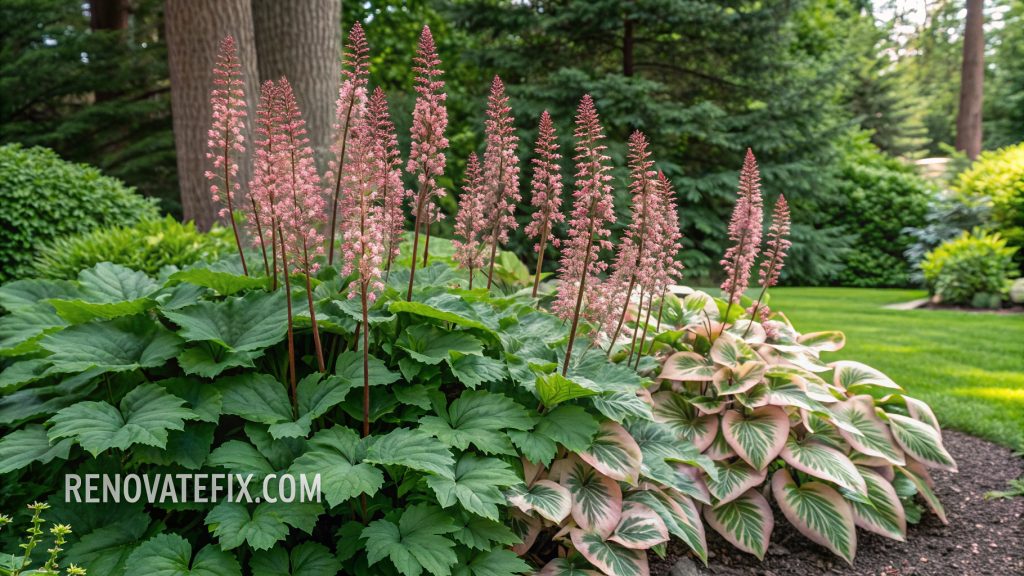
Position tall architectural plants like foxgloves, coral bells or astilbes rising through spreading hosta foliage, creating visual layers that draw the eye upward from ground level.
Select companion plants whose bloom times extend the seasonal interest of primarily foliage-focused areas, ensuring something captures attention throughout growing seasons beyond the beautiful but primarily horizontal hosta growth habit.
13. Hosta Specimen Focal Points
Showcasing exceptional individual hosta plants as garden focal points highlights their sculptural qualities while creating natural conversation pieces.
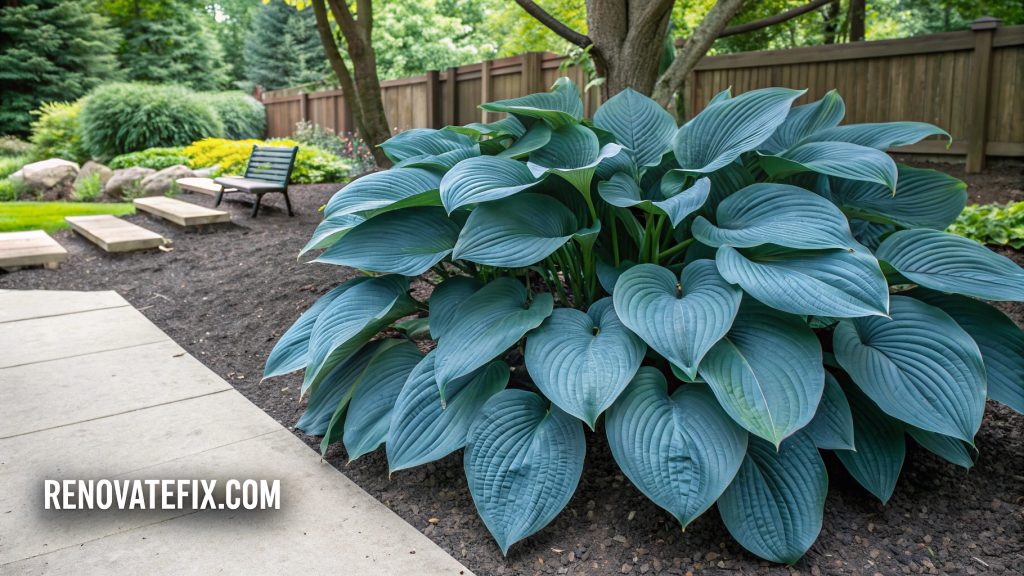
Select large, mature varieties with distinctive characteristics—perhaps unusually colored foliage, remarkable size, or unique growth habit—and position them where they can be viewed from multiple angles.
Surround specimen plants with simple companion plantings or decorative mulch that won’t compete visually, allowing the featured hosta to command attention through its inherent beauty and presence.
14. Fragrant Hosta Collections
Grouping scented hosta varieties near seating areas or garden paths creates sensory experiences that engage visitors beyond visual appreciation alone.
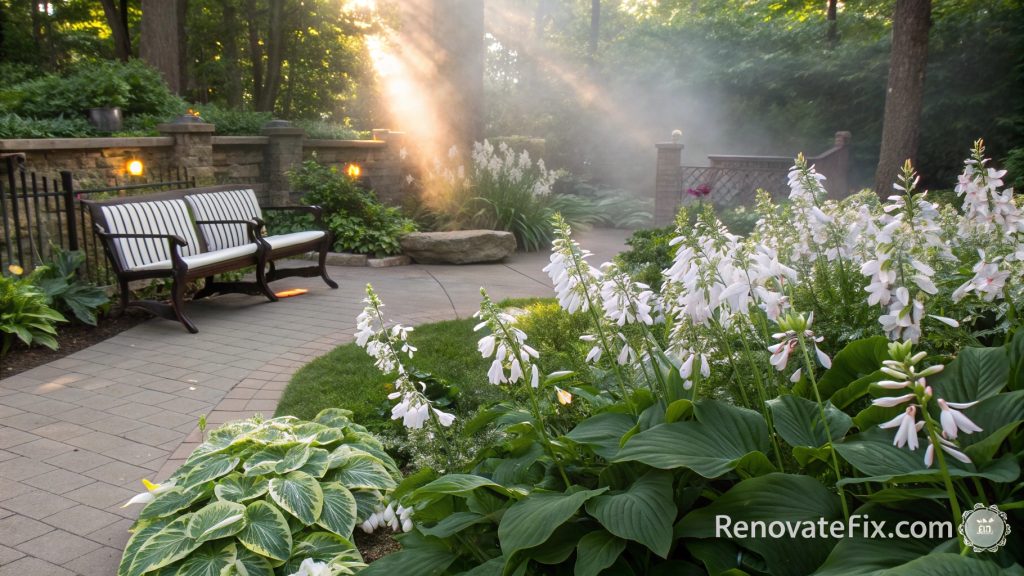
Position fragrant cultivars where their subtle sweet aromas will be noticed during summer evenings when many release their strongest perfume, particularly near garden benches or dining areas.
Plant in raised situations where flowers will be positioned closer to nose level, making their often-overlooked scent more readily detectable during casual garden enjoyment.
15. Geometric Pattern Planting
Arranging hostas in deliberate geometric patterns creates structured garden areas with distinctive visual impact from elevated viewing positions.
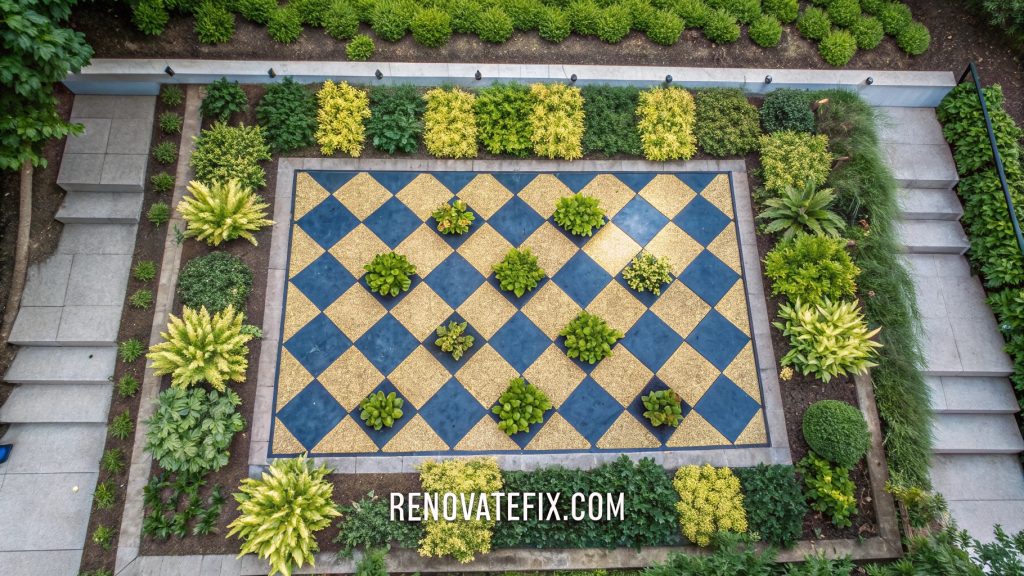
Select varieties with consistent growth habits and similar vigor to maintain the integrity of the pattern throughout growing seasons, using strongly contrasting leaf colors to emphasize the geometric arrangement.
Position these formal displays where they can be appreciated from above—perhaps visible from elevated decks or upstairs windows—allowing observers to fully appreciate the intentional design aspects that might be less apparent at ground level.
16. Hillside Hosta Cascades
Utilizing hostas on sloped terrain creates beautiful flowing effects as foliage appears to cascade down hillsides with natural grace and movement.
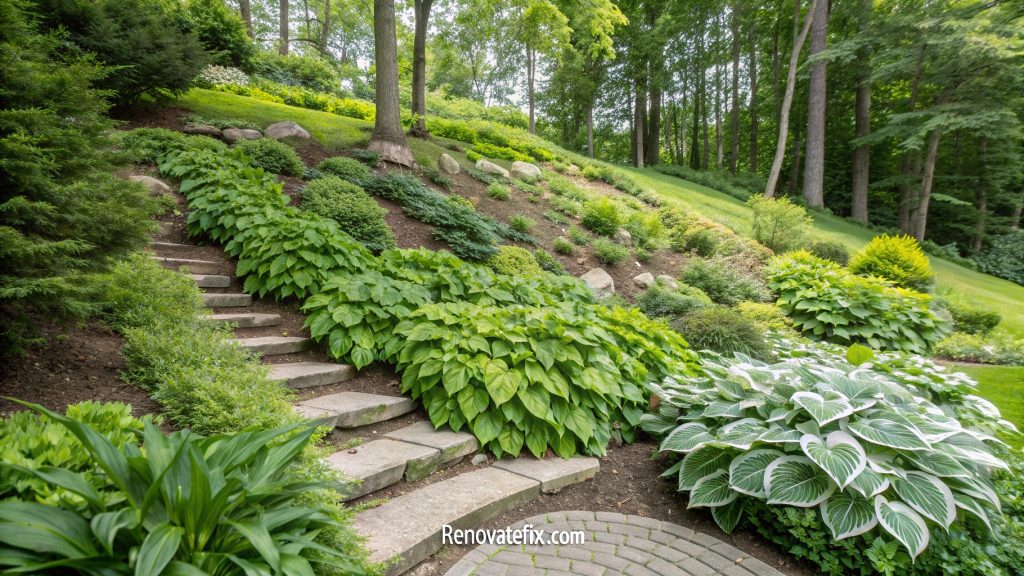
Select varieties with weeping or cascading growth habits for upper positions, transitioning to more upright specimens toward the base of slopes where they anchor the composition.
Plant densely enough that leaves overlap slightly, creating continuous green coverage that prevents erosion while maximizing visual impact throughout growing seasons.
This approach transforms potentially problematic garden areas into stunning focal points visible from significant distances.
17. Hosta-Fern Partnerships
Combining hostas with complementary fern varieties creates woodland combinations with exceptional textural interest and similar cultural requirements.
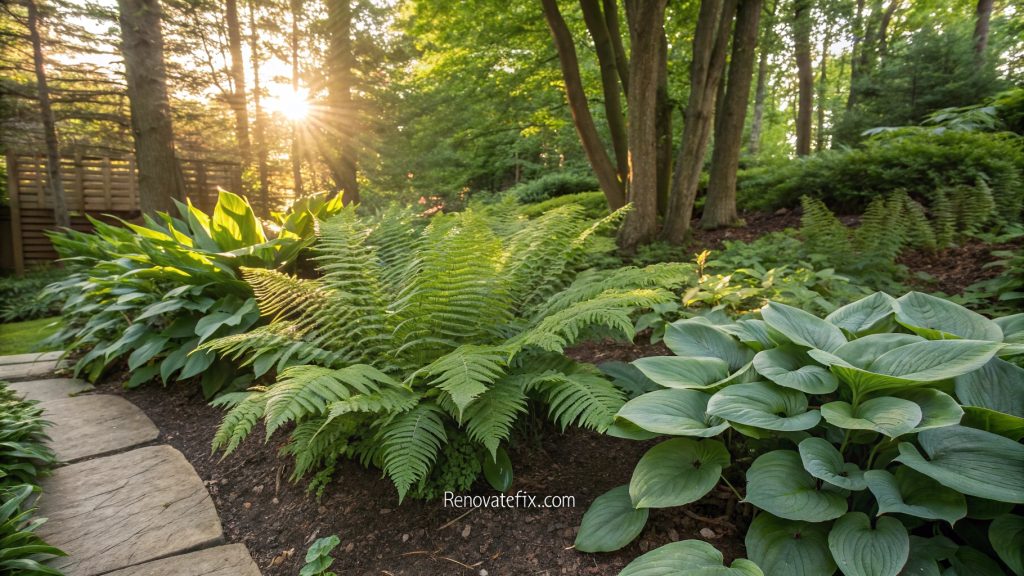
Position upright ferns behind or between hostas so their delicate fronds create feathery contrast against broader hosta leaves, selecting varieties whose colors complement rather than compete with neighboring plants.
Allow ferns to occasionally arch over hosta foliage where appropriate, creating natural-looking plant communities reminiscent of undisturbed forest floor environments many gardeners seek to recreate.
18. Multi-Season Interest Combinations
Planning hosta beds with companion plants that provide interest during dormant winter months ensures year-round garden appeal.
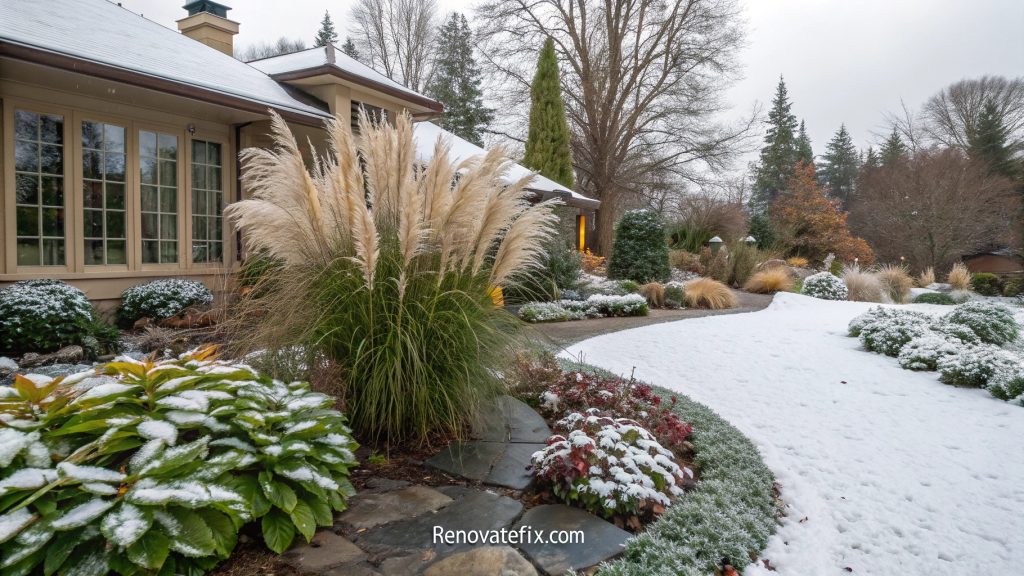
Intersperse winter-interesting elements like ornamental grasses, evergreen ground covers, or plants with decorative seed heads among hostas, positioning them where they’ll remain visible after hostas die back.
Select companions whose winter presence won’t interfere with emerging hosta shoots when spring returns, creating harmonious relationships that evolve beautifully throughout annual garden cycles.
19. Artistic Leaf Color Combinations
Creating deliberate color schemes using carefully selected hosta varieties produces artistic planting combinations worthy of garden photographers.

Blend gold, blue, green and variegated specimens in proportions that create balanced color distribution, positioning each plant where its unique coloration contributes to the overall composition.
Consider how changing light conditions throughout days and seasons will affect perceived leaf colors, creating arrangements that offer different visual experiences depending on viewing time and weather conditions.
20. Living Mulch Arrangements
Utilizing smaller hosta varieties as living mulch beneath trees or larger shrubs creates practical ground cover with exceptional ornamental value.
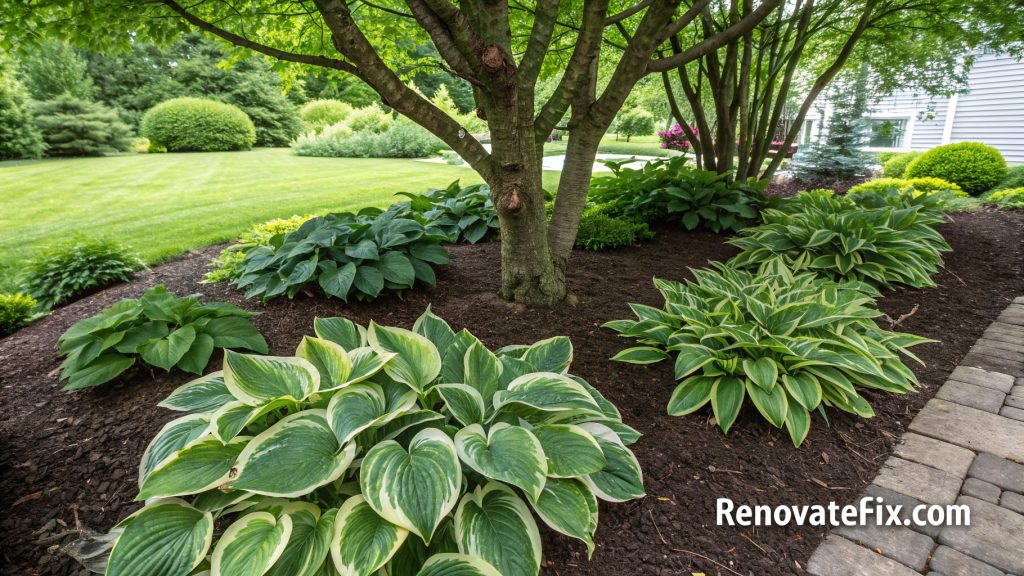
Select tough, spreading cultivars that will gradually fill spaces between larger plants, positioning them where their foliage will suppress weeds while enhancing overall garden aesthetics.
Allow these ground-covering hostas to naturally adapt to root competition from overhead plants, creating sustainable plant communities that require minimal intervention once established.
Conclusion
The remarkable versatility of hostas makes them invaluable additions to virtually any garden landscape.
From formal arrangements to naturalistic woodland settings, these adaptable perennials offer solutions for challenging garden spaces while providing exceptional ornamental value through their diverse foliage forms.
By experimenting with different combinations, arrangements, and companion plants, gardeners can develop distinctive landscape features that evolve and improve with each passing season.
Whether you’re working with a small urban courtyard or expansive rural property, these twenty hosta landscaping ideas provide starting points for creating your own shade garden masterpieces.
With minimal maintenance requirements and exceptional durability, hostas reward gardeners with reliable beauty that only improves as plants mature and establish themselves as cornerstone elements in thoughtfully designed landscapes.

